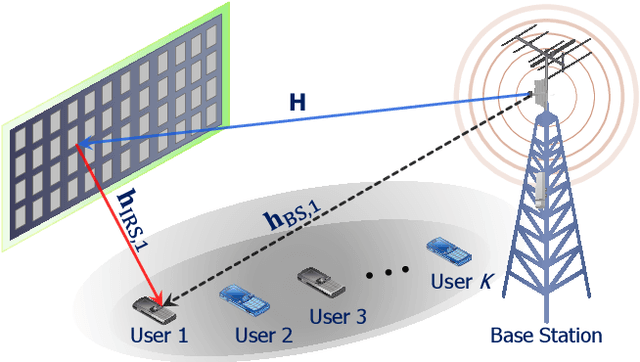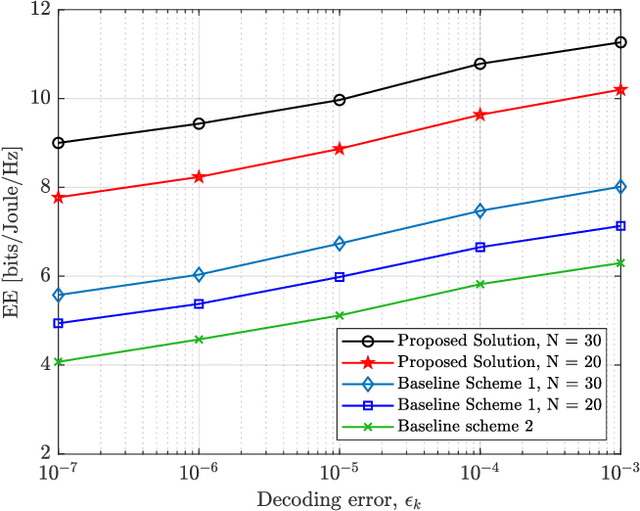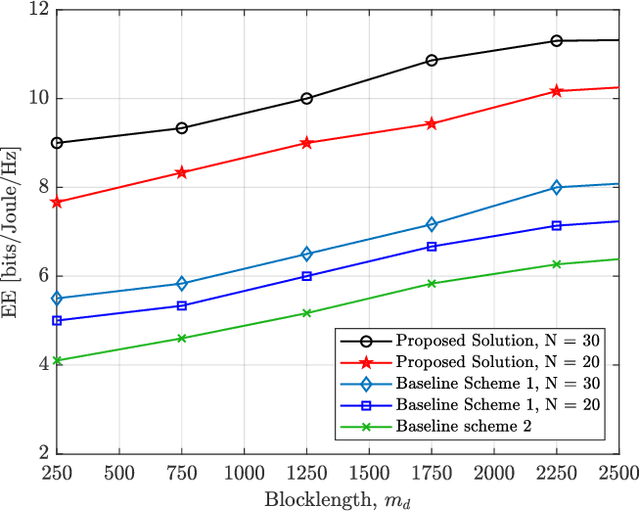Toward Energy Efficient Multiuser IRS-Assisted URLLC Systems: A Novel Rank Relaxation Method
Paper and Code
Sep 26, 2023


This paper proposes an energy efficient resource allocation design algorithm for an intelligent reflecting surface (IRS)-assisted downlink ultra-reliable low-latency communication (URLLC) network. This setup features a multi-antenna base station (BS) transmitting data traffic to a group of URLLC users with short packet lengths. We maximize the total network's energy efficiency (EE) through the optimization of active beamformers at the BS and passive beamformers (a.k.a. phase shifts) at the IRS. The main non-convex problem is divided into two sub-problems. An alternating optimization (AO) approach is then used to solve the problem. Through the use of the successive convex approximation (SCA) with a novel iterative rank relaxation method, we construct a concave-convex objective function for each sub-problem. The first sub-problem is a fractional program that is solved using the Dinkelbach method and a penalty-based approach. The second sub-problem is then solved based on semi-definite programming (SDP) and the penalty-based approach. The iterative solution gradually approaches the rank-one for both the active beamforming and unit modulus IRS phase-shift sub-problems. Our results demonstrate the efficacy of the proposed solution compared to existing benchmarks.
 Add to Chrome
Add to Chrome Add to Firefox
Add to Firefox Add to Edge
Add to Edge